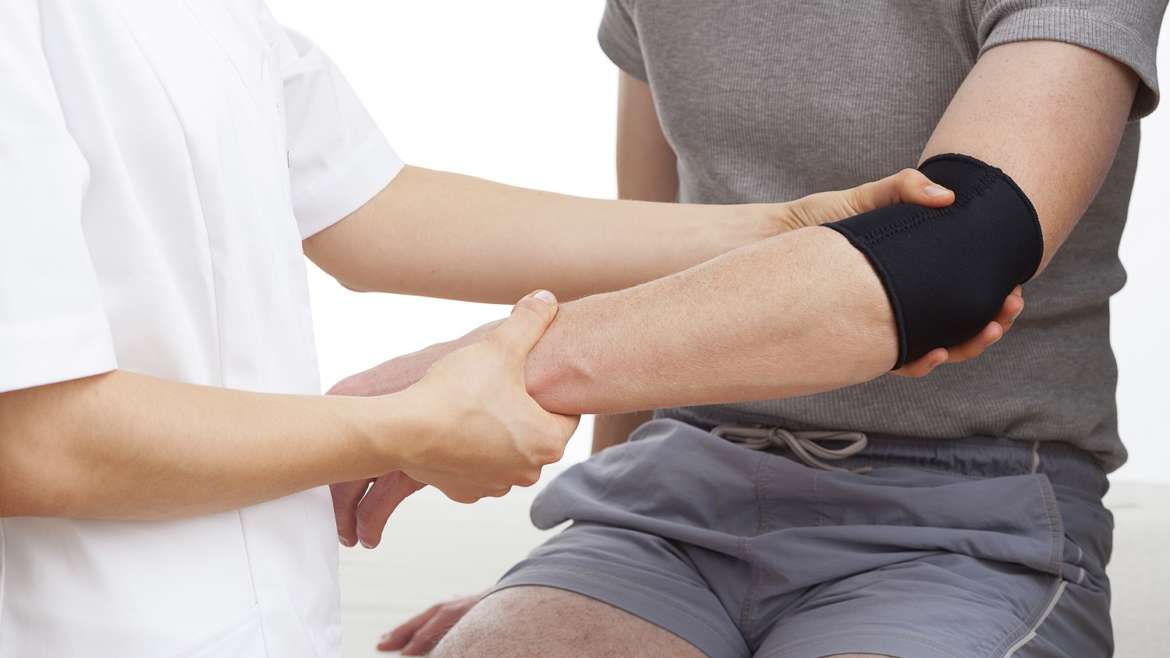The rise and rise of both Andy Murray and Laura Robson have brought about an incredible up taking of tennis in recent years, with the UK today being home to an estimated 746,900 players. Yet despite its popularity amateur players largely remain subject to a catalogue of frequent injuries – with the sport seemingly being accepted as one that comes with plenty of potential for injury.
This is backed up by a few well-placed statistics, such as there being 5 injuries for every 1,000 hours of participation; and 33 hospitalisations per 100,000 tennis players. The latter of these stats may also provide reason behind such acceptance, and while such injuries are not typically serious enough to require hospitalisations, this is not the same as them being untreatable with medical help.
What causes these injuries, how players can avoid them and what should be done following an injury?

The top three tennis injuries (and how to avoid them)
Tennis elbow
Overview: Tennis elbow is a condition whereby the elbow suffers pain and tenderness; whilst the forearm may also present discomfort.
Cause: Tennis elbow occurs due to an overuse of muscles that either extend the wrist unnaturally, or that bend it backwards.
Tips for avoidance: Tennis elbow may be avoided by ensuring that a full warm-up routine is followed, as well as using the right racket grip size.
Shoulder injuries
Overview: Shoulder injuries can present a wide variety of symptoms, including pain of varying degrees, discomfort, swelling, weakness, instability, popping and clicking or catching in the shoulder.
Cause: Shoulder injuries are suffered when there is poor condition and strength in the rotator cuff muscles (the muscles that help to position the shoulder bones). When these muscles are either fatigued or weak the overcompensation of the shoulder socket can lead to irritation of the tissues that surround it.
Tips for avoidance: Regularly practicing wrist extensions and flexing the shoulder to wrist movement can help decrease the chance of injury, and regular stretching and strengthening of the shoulder helps stabilise the muscles.
Stress Fractures
Overview: Stress fractures are where bones suffer from tiny cracks; this is often experienced in the leg and foot. Symptoms include pain that subsides during rest; pain that intensifies during regular daily tasks; swelling on the top of the foot, and/or outside of the ankle, tenderness and bruising (although bruising isn’t always apparent).
Cause: Stress fractures occur when training pressures are increased too quickly, with the body being unprepared for the activity it is expected to undertake.
Stress fractures are particularly prevalent amongst the young, with an estimated 20% of such players offering one at some stage of their playing.
Tips for avoidance: Following a proper strength and endurance training routine is an essential element of avoiding stress fractures; as is the wearing of proper footwear.
What to do if you are injured
First things first: Suspend all training
This initial step is simple: when injured, do not attempt to ‘play through’ the pain. Doing so may only cause more damage and demand a longer recovery period.
Next steps: Seeking medical attention
The type of treatment that may be required will depend upon the injury that has been sustained. Above all else it’s important that a proper medical diagnosis is sought – rather than undertaking self-prognosis using this, or any other online guide. From here a medical professional will be able to advise you as to the best cause of action.
If you think you’ve got an injury from playing tennis give us a call on 020 3589 8664 and we’ll be able to diagnose the problem and help you get better.



Add Comment